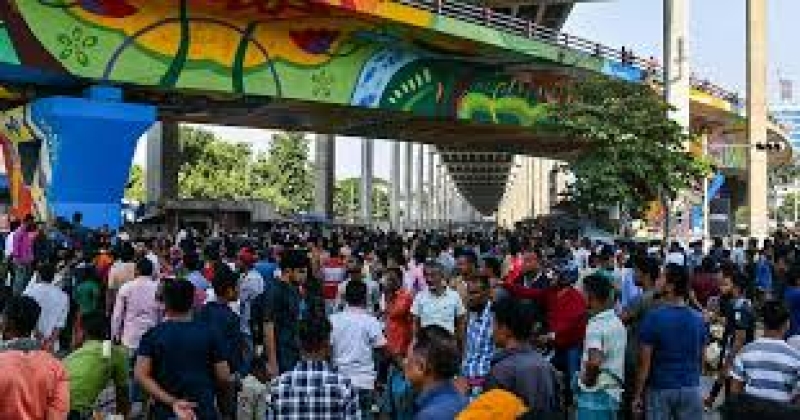- 2,582 candidates submit nomination papers for Bangladesh polls |
- Tarique Urges Collective Effort to Rebuild Bangladesh |
- US Pledges $2 Billion for UN Humanitarian Aid, Covers Bangladesh |
- Postal Ballots Sent to Over 376,000 Bangladeshi Voters Abroad |
- Arms smuggling attempts rise ahead of BD polls: Home Adviser |
Traffic Chaos in Dhaka as Battery Rickshaw Drivers Protest

Traffic in Dhaka came to a standstill on Thursday morning as drivers of battery-powered rickshaws staged protests, blocking key roads across the capital in response to a recent court ruling banning their operation within city limits.
The protests affected major areas including Mohakhali, Basila Dhaka Uddyan, Mirpur-10, Mirpur-12, Kazipara, Shewrapara, and Agargaon, with commuters facing severe gridlock as a result. The protestors also disrupted rail services by blocking tracks at Mohakhali, causing widespread delays for travelers.
In a bid to avoid the chaos, many people turned to the metro rail, creating heavy crowds at stations as commuters sought alternate routes to their destinations.
The unrest follows a Tuesday ruling by the High Court, which ordered the cessation of battery-run rickshaws in Dhaka within three days. This decision has sparked anger among rickshaw drivers, who argue that the move will deprive them of their livelihoods.
Md Russel, Officer-in-Charge of Banani Police Station, confirmed that the protests began around 9 a.m. at the Mohakhali intersection, where rickshaw drivers halted traffic. The protests later spread to several other areas, including Mirpur and Shewrapara, with barricades set up on key roads.
Tania, Assistant Commissioner of Pallabi Zone, reported that drivers also staged processions in Mirpur-10, Kazipara, and Shewrapara, intensifying the disruption. The protests have caused severe congestion in these areas, with daily commuters struggling to find alternative routes.
Battery-powered rickshaws, which now make up a significant portion of the city’s rickshaw fleet, are a common sight on Dhaka’s streets. It is estimated that nearly 1 million rickshaws, including a large number of converted battery-run models, operate in the capital. The ban, which targets both new and converted battery rickshaws, has raised concerns over job losses among drivers and the affordability of alternative transportation for many residents.
As the situation continues to unfold, authorities face growing pressure to find a solution that addresses both traffic congestion and the livelihoods of the affected rickshaw drivers.

